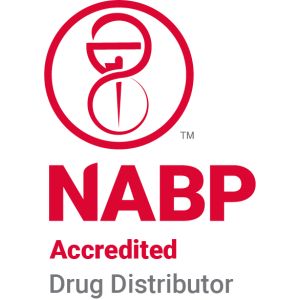A Look Inside Managing Supply Chain Risk in the Medical Device Industry
While some of us in the medtech industry may dream of a day when “supply chain risk” is not top of mind, that day is not here yet. Ongoing supply chain disruption and continued global inflation are exerting continuing pressure on medical device manufacturers. So, it is definitely not the moment to let up on supply chain risk management.
In this article, we look at the complex factors driving continued supply chain pressure through mid-2023, as well as how an expert strategic partner can help your firm better manage ever-evolving supply chain risk.
An industry still striving to regain stability
As if the pandemic pressures were not enough, more than 36 months on, the medical device industry is still wrestling with emergent challenges that have prevented it from regaining stability. These include increased demand, ongoing raw material shortages, labor challenges, sterilization capacity constraints, and the pressures of global inflation.
Against this, the long arm of global inflation is expected to continue, with stability at 4.1% not expected until early 2024. Inflation has driven trends that has put profitability at risk for many medtech firms, resulting in decreases in working capital, declining market valuations, and lower investment over the last 12 to 18 months. Together with disruptions in key materials supply for components and packaging and continued labor shortages for technical positions, this set of circumstances has put pressure on the bottom line.
But there’s more. Without proactive risk management—and therefore the ability to respond with agility to sudden supply chain shocks—medtech firms may be incurring higher operating costs. These show up in lead times that cause costly delays; in a large inventory footprint and carrying costs; and more.
If that’s the bad news, though, there are key steps that medical device companies can take to better manage supply chain risk while building more resiliency and agility. Ultimately, it’s about safeguarding the supply chain—and upholding quality and patient safety.
Understand the complex nature of supply chain risk
Supply chain risk is simply not the same in late 2023 as it was in early 2020. Consider the differences between material shortages caused by diversion to personal protective equipment (PPE) with interruptions to alloy materials resulting from the Russian-Ukraine conflict.
In such a complex, dynamic situation, it’s essential to constantly assess the inbound supply chain to identify potential vulnerabilities and weak links that can cause disruptions. This includes analyzing fluctuations in or risk to critical components, single-source suppliers, regulatory changes, and geopolitical factors. Analysis should also factor in other risks including quality issues and failures, transportation delays, extreme weather, and natural disasters.
In addition to inbound supply issues, OEMs should conduct regular audits of their suppliers to ensure adherence to quality standards as well as regulatory compliance.
Address the risk of supply shortages
To reduce risk, OEMs should vet and diversify their supplier base, with an eye toward creating redundancy for critical components to minimize potential delays and disruptions. Building strong relationships forged on clear communications with suppliers and vendors is very important. This includes remaining in constant contact with suppliers and collaborating on contingency planning that addresses shared risk. Continuous monitoring can go a long way toward identifying any early warning signs that point to potential problems. What’s more, a proactive and expert partner will help OEMs stay ahead of potential challenges through clear communication and robust planning.
Pursue greater supply chain visibility
Leveraging technology and expertise can enhance visibility across the supply chain and smooth out or reduce emergent supply chain challenges. Continuous monitoring and communication can help OEMs better align production schedules, optimize operations, and maintain optimal inventory levels. This can also help to reduce lead times—or at least hold them steady during a time when “weeks” is the norm.
Stay informed on upcoming changes
Shifts in regulatory requirements can also introduce supply chain pressures and delays. Think back to the implementation of EU MDR on conversion of non-sterile to sterile packaging, and the changeover challenges that many OEMs faced. Despite the reality that it was coming, the enforcement date still arrived before many OEMs were ready to meet it.
In the day-to-day operational chaos, it can be difficult to stay informed on what’s coming next. Engaging in industry forums, work groups, and trade conferences can help to provide an overview of changing regulatory guidance. An expert partner can also be a resource for that overarching regulatory intelligence.
Consider the benefits of strategic partnership
A strategic supply chain partner can be a single point of contact ready and able to help OEMs meet the ongoing challenges of the supply chain in today’s market. And, often outsourcing will provide an expedited route to the expertise and capacity to better manage and strengthen the supply chain, including:
- Expert management and continuous monitoring of ongoing supply chain risk
- Access to a robust, vetted network of suppliers
- Enhanced visibility across the supply chain
- Smoother coordination of the inbound supply chain
- Reduced lead times
- Current insight into upcoming and anticipated regulatory changes
Such a partnership gives OEMs the ability to build a better, stronger supply chain—and reduce risk in a volatile market. And ultimately, it’s about the end result: delivering lifechanging technology to the patients who need it most.
Millstone offers post-manufacturing and aftermarket services to more than 50 customers, including some of the top 10 orthopedic companies in the world. We are constantly evolving our processes and services to help OEMs achieve sustainable success. We offer packaging, logistics, and testing—all with an unparalleled focus on quality.
What could we help you do better? Learn more at https://millstonemedical.com.
Comments are closed.



